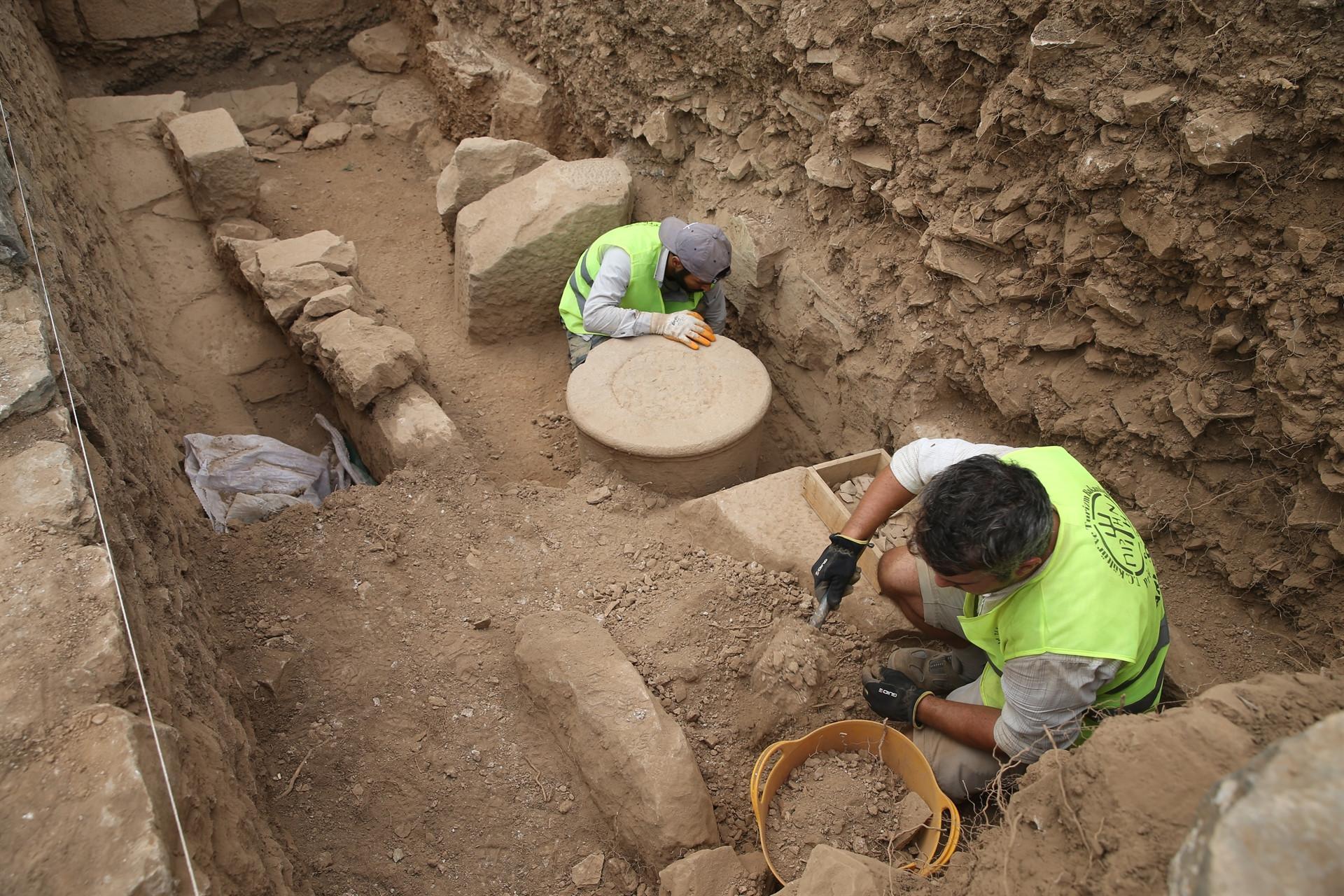
A church dating back 1,600 years, built by the first Christian community, has been found in the ancient city of Priene in the western province of Aydın’s Söke district.
The excavations in the ancient city, known as the “Pompei of Anatolia” due to its well-preserved structures and city plan, are being carried out under the direction of Professor İbrahim Hakan Mert from Uludağ University with the contributions of the Culture and Tourism Ministry.
Located on steep cliffs and offering visitors the opportunity to watch the unique view of Söke Plain thanks to its elevation, the ancient city draws attention with its Temple of Athena, the theater, the Temple of Demeter, the agora, the bouleuterion, the Upper Gymnasium, the Lower Gymnasium, the Egyptian Temple, the Byzantine church and residential areas.
Speaking to the state-run Anadolu Agency, the deputy head of the excavations, Uludağ University academic Ali Altın, said that they saw a good example of the urban structuring called the Grid Street Plan there.
Stating that the ancient city, which is on the UNESCO World Heritage Tentative List, has places that cut parallel streets perpendicularly, Altın stated that the famous philosopher Bias also lived there and that Priene was also known as the region where science and art were born.
Noting that this year’s excavations focused on structures outside the city, such as cemeteries, Altın said they found traces of a church, which was exciting for them.
Mentioning that there were several churches and temples in the city before, Altın said: “This church was probably a building that the first Christians here used for collective worship and was built for this purpose. It is possible to say things according to the information given by the finds. We might say that it is the earliest church.”
He noted that the church is located in the area used as the cemetery of the city.
Explaining that the church had a rectangular plan, Altın said: “There is also a courtyard on the west side. The floor of the church was covered with mosaic pavement decorated with geometric motifs, created by small-sized stones placed side by side. We found that the interior walls of the building were also covered with murals all the way. These murals consist of several different layers. This indicates that this church was probably used from the early stages of the early Christian era, perhaps to the later stages of the Byzantine period. The studies we are currently carrying out show us that it was a structure built by the first Christian community in Priene. Therefore, it is a very important structure for us.”
Noting that a part of the church, which was built 1,600 years ago, was unearthed, Altın said that they plan to complete the work in a few years and open the historical structure to visitors.
Temples, theater, agora, public buildings, shops and educational buildings have been so far unearthed in the ancient city during the excavations, which was first started by German archaeologists in the 1895s.
“Priene is a city with an extraordinarily good state of preservation. Unlike many other ancient cities in Anatolia, the city was not occupied since the Byzantine era. Because of that, the city stayed very well-preserved until now, and it presents a good view of the reflection of the daily life in ancient times like Pompeii in Italy,” UNESCO says on its website.
“Compared to other excavation sites in Asia Minor, the excavated residential quarters represent an indisputably unique feature of Priene. As a whole, the houses of Priene are a unique ensemble of settlement history and present Hellenistic life to us to a similar degree to that which the Italian Pompeii does for Roman life,” it adds.